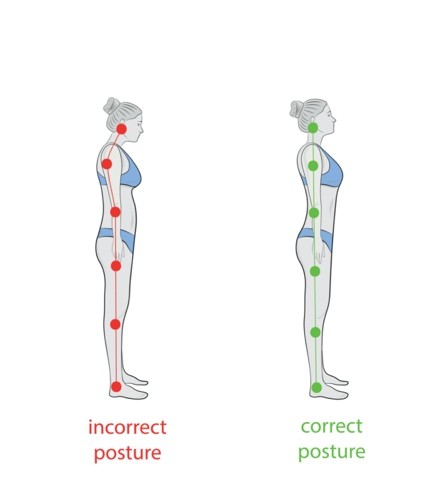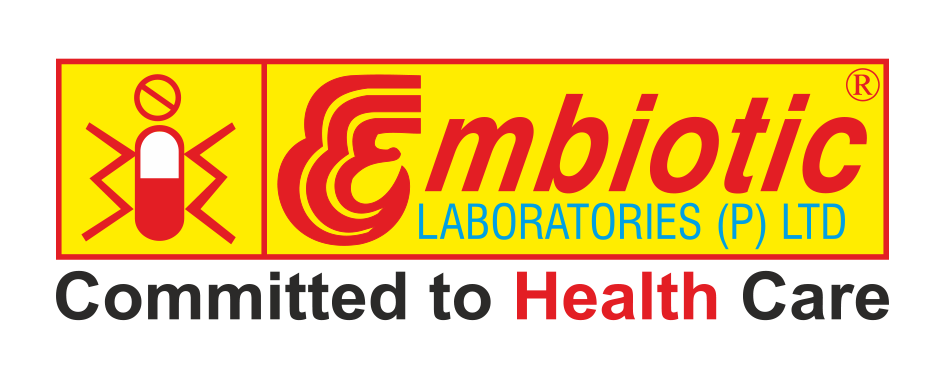May 5, 2025
In our increasingly sedentary and screen-dominated world, a silent epidemic is unfolding: Posture Problems. From the nagging ache in your neck to the persistent lower back pain, many seemingly unrelated ailments can be traced back to how we hold ourselves. Through this blog, we will delve deep into the multifaceted world of posture problems, examining their causes, diverse manifestations, far-reaching consequences, and, most importantly, actionable strategies for reclaiming a balanced and healthy alignment.
Understanding the Foundation: What Exactly is Good Posture?
Before dissecting the problems, it’s crucial to define what a Good Posture is. A Good posture isn’t about rigidly standing at attention, instead it’s a dynamic state of balance where the body’s muscles and ligaments efficiently support the skeletal structure. Imagine a plumb line running from your earlobe, through your shoulder joint, hip joint, slightly behind your kneecap, and down to the centre of your ankle. In optimal alignment:

- Head: Held upright, ears aligned with shoulders, not jutting forward.
- Shoulders: Relaxed and slightly pulled back, not rounded forward or hunched.
- Spine: Maintaining its natural “S” curve – a gentle inward curve at the lower back (lordosis), a slight outward curve at the upper back (kyphosis), and another gentle inward curve at the neck (cervical lordosis).
- Chest: Open and lifted.
- Abdomen: Gently engaged, supporting the core.
- Hips: Level and balanced.
- Knees: Slightly bent, not locked.
- Feet: Flat on the ground, weight evenly distributed.
This alignment minimizes strain on muscles, ligaments, and joints, allowing the body to move efficiently and function optimally.
The Culprits Behind the Slouch: Unmasking the Causes of Poor Posture

The development of posture problems is rarely a singular event; it’s often a gradual accumulation of various contributing factors. Understanding these culprits is the first step towards addressing the issue:
- Sedentary Lifestyle and Prolonged Sitting: This is arguably the most significant modern-day offender. Spending hours hunched over desks, computers, and phones weakens core muscles, tightens hip flexors and hamstrings, and leads to rounded shoulders and a forward head posture.
- Technology Overuse (“Tech Neck” or “Text Neck”): Constantly looking down at screens puts immense strain on the neck and upper back. For every inch the head moves forward, the effective weight on the spine increases significantly, leading to muscle fatigue, pain, and eventually structural changes.
- Muscle Imbalances: Weak core muscles, tight chest muscles, weak upper back muscles, and tight hamstrings are common imbalances that pull the body out of alignment.
- Carrying Heavy Loads Incorrectly: Regularly carrying heavy bags on one shoulder or lifting objects with improper technique can strain the spine and lead to postural deviations.
- Psychological Factors: Stress, anxiety, and even depression can manifest physically as slumped shoulders, a closed-off chest, and a generally withdrawn posture. The mind-body connection plays a significant role in how we carry ourselves.
- Poor Sleeping Habits: Sleeping on an unsupportive mattress or with too many pillows can misalign the spine overnight.
- Certain Medical Conditions: Scoliosis, kyphosis, arthritis, and other musculoskeletal conditions can directly impact posture.
- Fashion Choices: High heels, while aesthetically pleasing to some, can shift the body’s center of gravity and contribute to poor posture over time.
The Tangible Toll: Unveiling the Consequences of Poor Posture
The effects of poor posture extend far beyond a less-than-ideal appearance. Over time, it can lead to a cascade of physical and even psychological problems:
- Musculoskeletal Pain: Neck pain, back pain (upper and lower), shoulder pain, and headaches are frequently linked to poor postural habits. The constant strain on muscles and ligaments leads to fatigue, tension, and eventually pain.
- Reduced Range of Motion and Flexibility: Misalignment can restrict movement in the neck, shoulders, hips, and spine, making everyday activities more difficult and increasing the risk of injury.
- Increased Risk of Injury: Poor posture compromises the body’s natural shock absorption mechanisms, making it more susceptible to strains, sprains, and other injuries during physical activity or even simple movements.
- Breathing Difficulties: Slumped posture compresses the rib cage, restricting lung expansion and potentially leading to shallow breathing and reduced oxygen intake.
- Digestive Issues: Poor posture can compress abdominal organs, potentially contributing to digestive problems like heartburn, constipation, and bloating.
- Circulatory Problems: Hunched shoulders and a compressed chest can impede blood flow, potentially leading to cold hands and feet and other circulatory issues.
- Temporomandibular Joint (TMJ) Disorders: Forward head posture can strain the muscles around the jaw, contributing to TMJ pain, clicking, and difficulty opening and closing the mouth.
- Impact on Self-Confidence and Mood: Studies have shown a link between posture and emotional state. Slumped posture can contribute to feelings of low self-esteem and even depression.
- Long-Term Degenerative Changes: Over time, chronic poor posture can contribute to the development of osteoarthritis, spinal misalignments like scoliosis and kyphosis, and other degenerative conditions.
The Path to Postural Harmony: Strategies for Correction and Prevention
The good news is that posture problems are often reversible and, more importantly, preventable:

- Cultivating Posture Awareness:The first step is becoming consciously aware of your posture throughout the day. Regularly check your alignment while sitting, standing, and walking.
- Ergonomic Adjustments:Optimize your workspace. Ensure your chair provides good lumbar support, your feet are flat on the floor (or on a footrest), your monitor is at eye level, and your keyboard and mouse are within easy reach.
- Regular Movement and Breaks: Break up long periods of sitting with short walks and stretches. Aim for at least a few minutes of movement every hour.
- Targeted Exercises: Incorporate exercises that strengthen core muscles, improve upper back strength, and stretch tight muscles. Yoga and Pilates are excellent for improving overall posture and body awareness.
- Proper Lifting Techniques: Learn and practice proper lifting techniques, bending at the knees and keeping your back straight when lifting heavy objects.
- Sleeping Position and Support: Choose a supportive mattress and pillow that maintains the natural curvature of your spine. Avoid sleeping on your stomach, as it can strain your neck and back.
- Weight Management: Maintaining a healthy weight is beneficial for overall musculoskeletal health.
- Stress Management Techniques: Practice relaxation techniques like deep breathing, meditation, or yoga to reduce stress and its physical manifestations.
- Footwear Considerations: Choose supportive footwear that provides good arch support. Limit the prolonged use of high heels.
- Professional Guidance: Consult a physical therapist, chiropractor, or other healthcare professional for a comprehensive postural assessment and personalized recommendations. They can identify specific muscle imbalances and provide targeted exercises and manual therapy.
Embracing a Posture-Positive Future:
Posture problems are not an inevitable consequence of modern life. By understanding the causes, recognizing the consequences, and actively implementing corrective and preventative strategies, we can take control of our alignment and unlock a multitude of benefits. It’s a journey that requires conscious effort and commitment, but the rewards of a well-aligned body are immeasurable, paving the way for a healthier and comfortable future. Let us break free from the silent epidemic and embrace the power of good posture.
Disclaimer: The information presented is accurate and evidence-based, drawing from reputable sources and adhering to ethical guidelines. This information is for general knowledge and informational purposes only and does not constitute medical advice.

